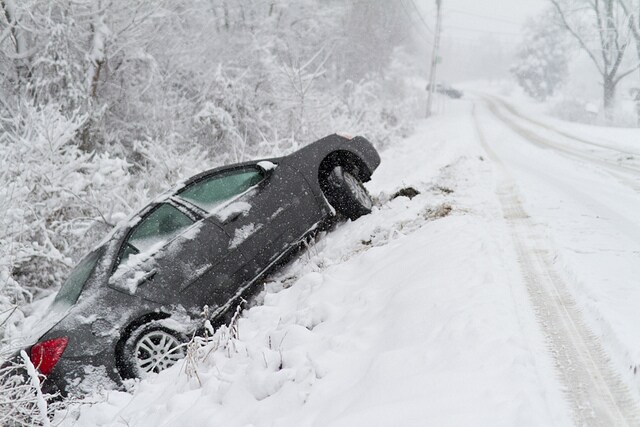You depend on your vehicle to get you from point A to point B safely and soundly, even when dealing with the hazards winter weather brings. From the moment your vehicle is in motion, winter driving demands your full attention.
With rainstorms, black ice, slush, or a whiteout wall of snow, you are at higher risk of a collision or breakdown. While having auto insurance helps protect you and your vehicle from the financial damage from the accidents caused by winter weather, there are several precautions you can take to make sure you are prepared over the winter season. Follow these basic tips to keep you and your loved ones safe:
Your Tires Matter.
Check your tires before venturing out in winter weather conditions. Wet, icy, or snowy road surfaces are slick and dangerous, and having the right winter tires with plenty of tread is a basic – but critical – part of staying safe. Extreme cold weather shrinks the compressed molecules of air within tires, often giving them an underinflated appearance. This is especially true during periods of intense cold passing through your area. Even so, check tire air pressure before venturing out on a longer trip. Take note that your car will run better, safer, and more efficiently if warmed up for 10 to 15 minutes.
Prepare for the Unexpected.
Pack a sheet of cardboard, shovel, and a supply of cat litter or sand. These items can help you if you get stuck. With a shovel to dig out of a pile of snow you’ve become caught in, and a good-sized piece of cardboard with sand and cat litter for traction, you can get your vehicle back on the road. During heavy weather, it could take hours to get help – and remote areas may not have good cell service, so be prepared before you venture out.
Gear Up with an Emergency Kit.
Purchase or put together an emergency kit. Keep your safety kit in the trunk with a heavy blanket or two, extra clothes (consider the likelihood you’ll be traveling with passengers, and pack accordingly), and a case of bottled water. Basic kits can be purchased ready-made, but be sure to sort through the kit and customize it, adding any missing items. To create your own safety kit, ensure you include:
- Flashlight
- Extra batteries
- Portable cellphone charger
- Paper road map
- Waterproof matches
- First aid kit
- High calorie protein bars
- Emergency whistle
- Winter safety handbook
- Emergency blankets
- Flares





